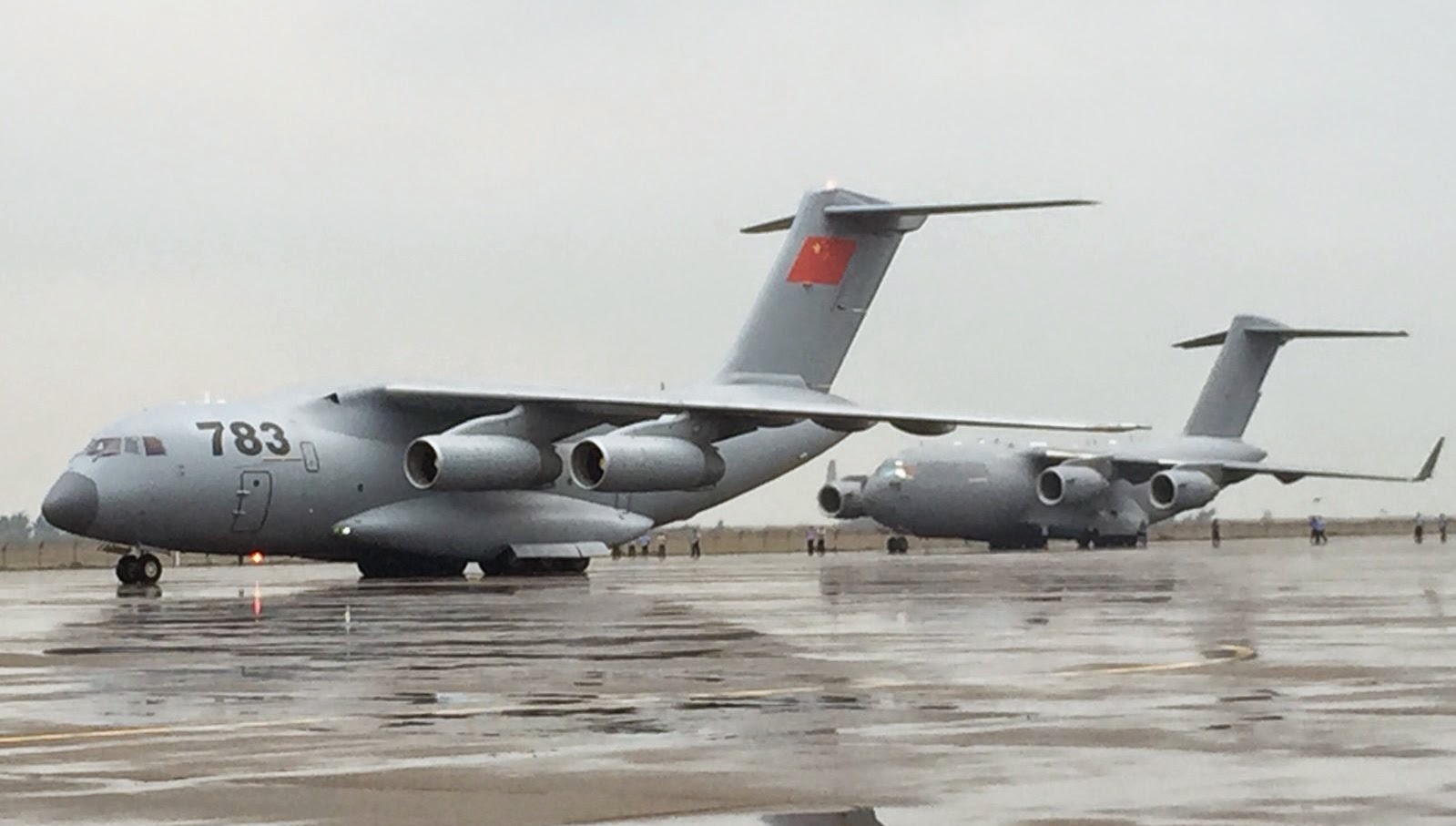You are using an out of date browser. It may not display this or other websites correctly.
You should upgrade or use an alternative browser.
You should upgrade or use an alternative browser.
China's transport, tanker & heavy lift aircraft - esp. Y-20/YY-20
- Thread starter Totoro
- Start date
schlieffen
New Member
C-17 was designed with transporting M1 Abraham tank and other heavy equipment to every corner of the world where needed by the US military, thus its dimension and flight range has to be able to meet the requirements.
That is a bit rhetoric. The C-17 is known to be slightly short-legged for many years; a result of compromises made to suit conflicting performance requirements. It can barely carry any useful payload when flying the westbound transatlantic route without fuel stops, and a greatly reduced payload when flying the eastbound leg. This means either fuel stops in Newfoundland, Iceland or Ireland, or deploy tankers for aerial refueling, or limit it to light-duty cargo only. Airlifting MBTs is a capability rarely used, and certainly not very practical, as it would take the entire strategic airlift fleet of USAF days to deploy a single Heavy BCT to theatre with a week’s supply. That’s the whole point of Stryker Brigades.
If its payload-range envelop is ~20% better than it is, the C-17 would be a near-perfect omnipurpose airlifter. Hence the numerous proposals we saw over the years made to stretch its fuselage , enlarge it wing or reduce its fuselage diameter, all aims to increase its range.
Z-9 model along Y-20 was an interesting hint to Y-20 cargo bay height limits...
I wouldn't put too much weight into that display -- it relies on them making all those individual models to scale with each other.
H-6 tanker opens break chutes.

Very Pretty old school bird, a throwback from the dark-ages, like our B-52s and KC-135s.

Having C-17 side by side with the Y-20, one can really see the difference and design philosophy.
For example, the Soloviev D-30KP-2 on the Y-20 is much smaller in diameter compare to Pratt & Whitney F117-PW-100 on C-17 - the F-117 is both wider in diameter but shorter in length; the Y-20 has a much bigger hump on the top side (and not as smooth transition) compare to C-17 making C-17 having a flatter profile; the nose cone of Y-20 is shaped more like a "bird's beak" pointing downwards than C-17's centerline approach; and then there is the obvious winglets that's missing from the Y-20.[/QUOTE
Actually, well probably because I do enjoy being a little contrary at times, I find the Y-20 to be a virtual clone of the C-17 in design philosophy, as you point out differences, those are rather small differences, the engine nacelles being an example, they are the size they are to cowl the engines that are available... as to the (bigger hump) on the Y-20, that is simply because the Chinese aircraft carries the spar carrythrough externally rather that having it pass through the fuselage, the carry through is likely bolted to external attach points that are then "faired in", a good design feature given that the "wing box gets lots of torque and the load of both wings is concentrated in that box, making it much easier to change, although I am rather certain it is "draggier" and will increase fuel consumption and reduce airspeed incrementally?
actually looking at the pictures more closely, it appears to be much like our old Lockheed C-141 Starlifter.
MwRYum
Major
Y-20 is actually closer to the Il-76 than even the C-141 or C-17, alas with some updated designs, the biggest shortcoming still the engine.actually looking at the pictures more closely, it appears to be much like our old Lockheed C-141 Starlifter.
By not dabbling too much with the known success formula, that's a logical step for the first attempt.
Wait a minute! The first time I went to see a movie, Snow White and the Seven Dwarfs, with my mother, I saw in the news reel before the main movie a mass of US B-29's flying over a North Korean AA battery and one of them exploding. Do you call me then antediluvian?Very Pretty old school bird, a throwback from the dark-ages, like our B-52s and KC-135s.
Wait a minute! The first time I went to see a movie, Snow White and the Seven Dwarfs, with my mother, I saw in the news reel before the main movie a mass of US B-29's flying over a North Korean AA battery and one of them exploding. Do you call me then antediluvian?
Nah, just old school, I saw my first Disney movie on Okinawa, the Swiss Family Robinson, I did note the other day that the new Sea Plane the Chinese are building appears to have a very traditional rib and stringer construction, and the same manner of wing attach with four vertical spar attach points protruding from the upper fuselage, and then those attach points faired in, what we might have referred to almost as a Parasol type arrangement. The advantage being that the center section/wing box does not pass through the fuselage skin and may be replaced by bolting on a new one. The wing box/center section does take a lot of stress, and with airlifters particularly, as there are massive twisting, bending moments applied on every flight, and one thing that continues to life limit many different aircraft?


